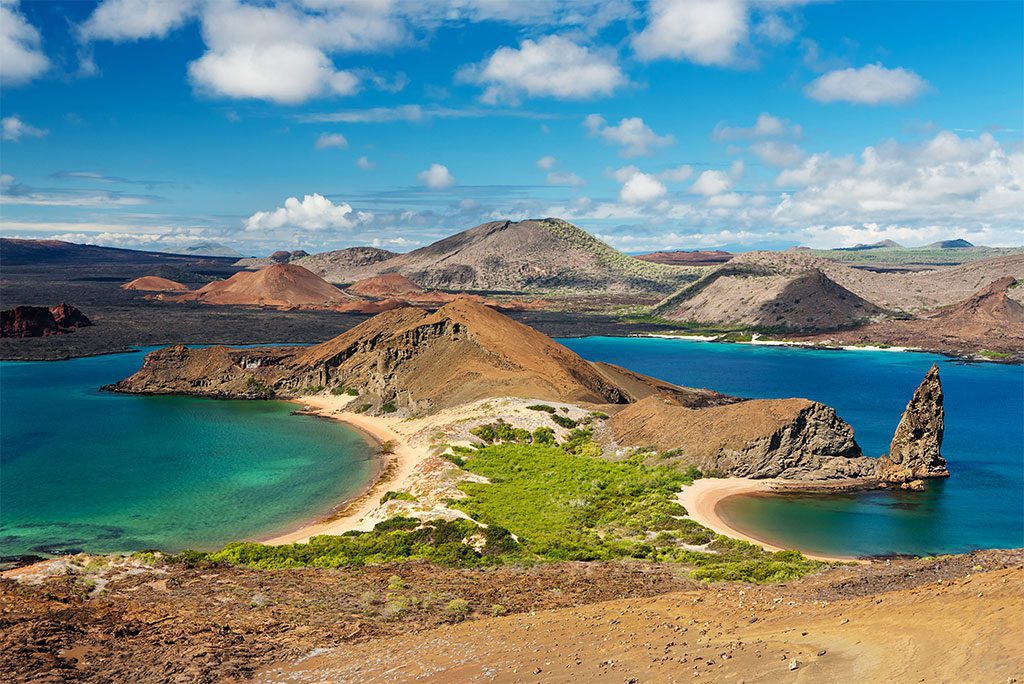The nation of Ecuador, so called because the equator passes across it, has something to offer everyone. Starting with its over 1,000 miles of coastline with excellent beaches, this area advances inland to the Andes Mountains and the Amazon Basin’s lush rainforests.
Even the faraway Galapagos Islands, home to a plethora of fantastical species, are not excluded. The area between the two extremes is home to both bustling metropolises with all the modern conveniences and quaint indigenous towns with their vibrant marketplaces. A rundown of the top tourist destinations in Ecuador:
10. Guayaquil
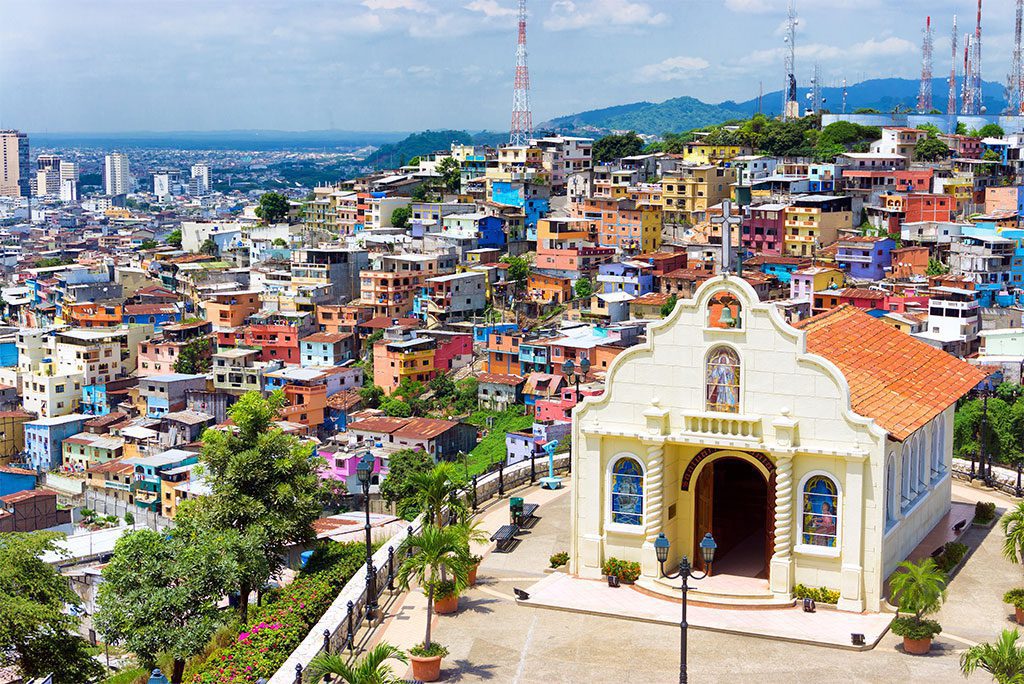
A beautiful church in the city of Guayaquil, Ecuador. Image source: Jess Kraft/Shutterstock.com
With a population of over 2.7 million, Guayaquil is Ecuador’s economic hub. The city was established in 1538 by the Spanish conqueror Francisco de Orellana on the banks of the Guayas River, which empties into the Pacific.
Visitors like the colonial architecture, rich gardens, and local animals at the Parque HistoricoGuayaqui, and they appreciate the park’s no-cost policy. The colorful, historic district of Las Peas is home to a lighthouse and breathtaking views of the city below, while the riverside promenade of Malecon 2000 is the perfect location to wind down after a hard day.
9. Mindo
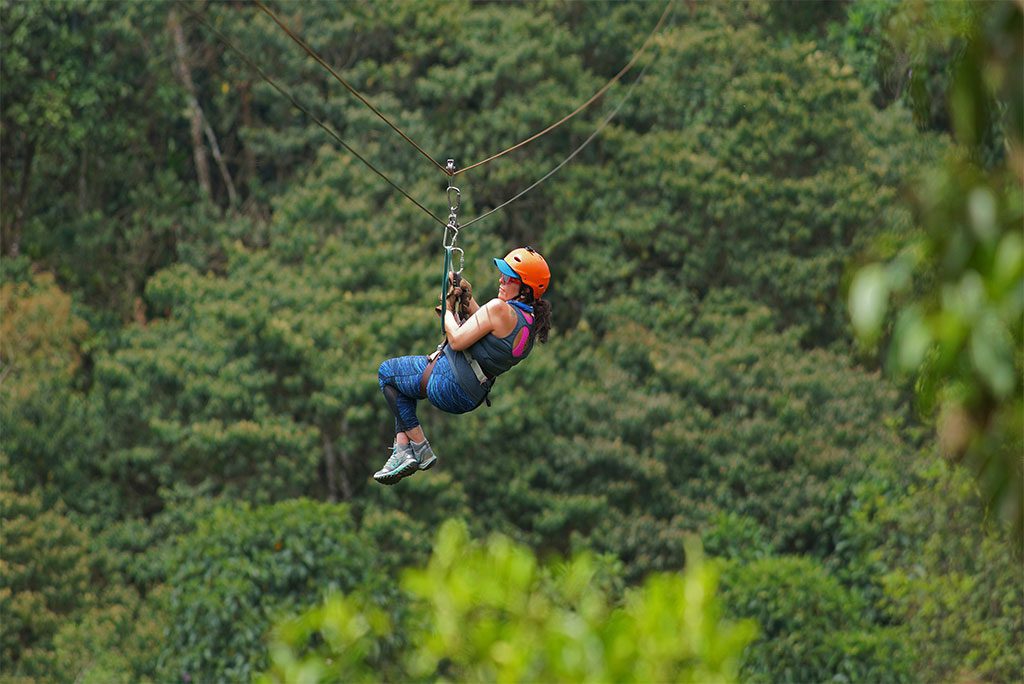
A picturesque view of Mindo, a small town in the Pichincha province of Ecuador. Image source: Alejo Miranda/Shutterstock.com
Eco-tourists may enjoy the finest of two worlds in Mindo: the tropical Andes and the Chocoan lowlands. Cloud forests, farmlands, three main rivers, and hundreds of streams await travelers here.
Mindo is a popular travel destination because of the abundance of outdoor activities it offers, from rafting and birdwatching to mountain biking, horseback riding, and hiking. Those in need of a less rigorous vacation option may appreciate a visit to El Quetzal del Mindo, a chocolatier where they can learn about chocolate from the cocoa bean all the way through to the completed product.
8. Salinas
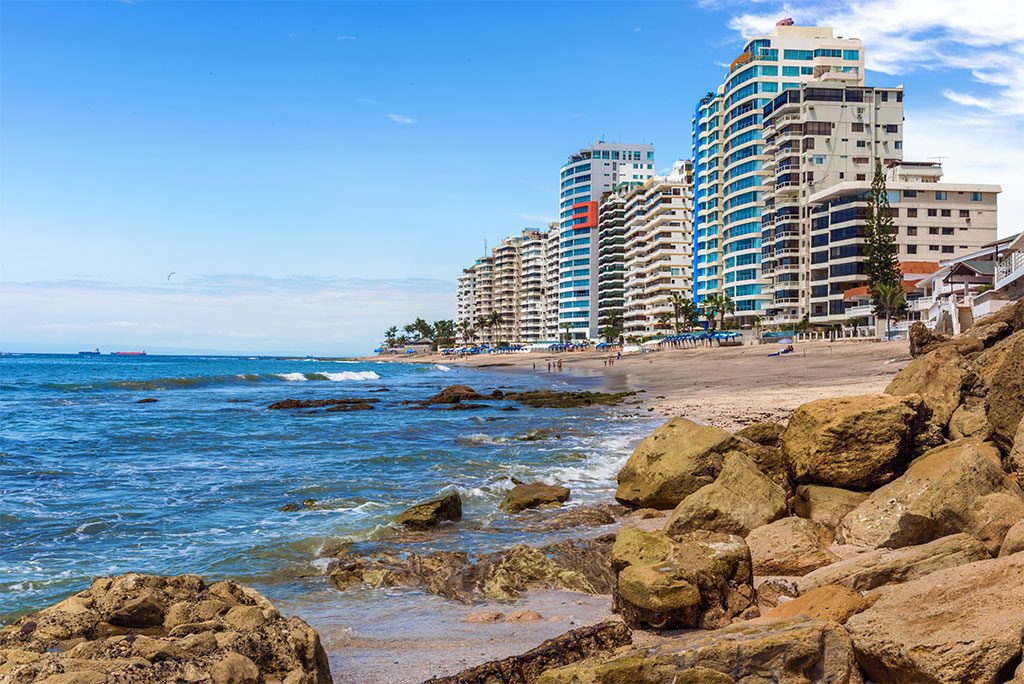
A colorful street in Salinas, a coastal town in Ecuador. Image source: Marek Poplawski/Shutterstock.com
Because of its location on the Pacific Ocean, the westernmost city in Ecuador, Salinas, is a hotspot for surfers and yachters. The beaches at Ecuador’s most well-known vacation spot are among the best in the country. Because of all the high-rise condos along the coast, the area is sometimes referred to as “Little Miami Beach.”
Also located here is La Chocolatera, a beach where turtles lay their eggs (and so visitors must have permission to access). December and early January are prime seasons to visit Salinas. Weekends in the summer are insanely crowded, and the months of April through November may be dismal and cloudy.
7. Quilotoa Loop
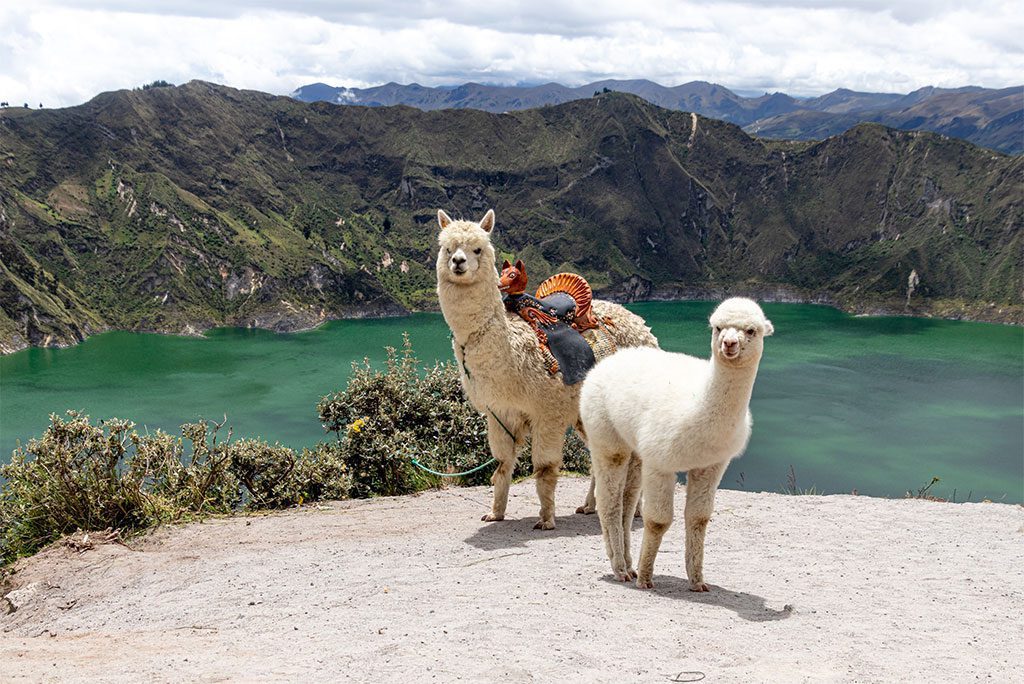
Quilotoa lake and the surrounding volcano crater in Ecuador. Image source: ireneuke/Shutterstock.com
The Quilotoa Loop is a path through some of the most isolated Andean settlements in Ecuador, and it is guaranteed to be a hit with hikers who appreciate wilderness exploration. It is possible to shorten the time it takes to complete the circle by taking a bus from one end to the other, but in doing so, hikers may lose out on several historic paths.
In Quilotoa, one may take in breathtaking panoramas of a crater lake. Colorful marketplaces may be found in most towns and cities every day of the week, with Sanquisili’s Thursday market being particularly well-known.
6. Riobamba

Aerial view of quinoa cultivated fields in Riobamba, Chimborazo, Ecuador. Image source: Ecuadorpostales/Shutterstock.com
Located in the Andes, Riobamba is remarkable for a few reasons. For one, it’s not far from Chimaborazo, Ecuador’s highest peak, at an altitude of 6,268 meters (20,564 feet). Hikers often begin the journey at 1 o’clock in the morning to see the sunrise from this spot.
The train trip to Nariz del Diablo (Devil’s Nose) is breathtaking, as it winds through mountainous terrain and cloud forests, and the station is the departure point for this journey. On Saturdays, residents of Riobamba may shop at a market that, unlike other Ecuadorian marketplaces, caters only to locals.
5. Banos
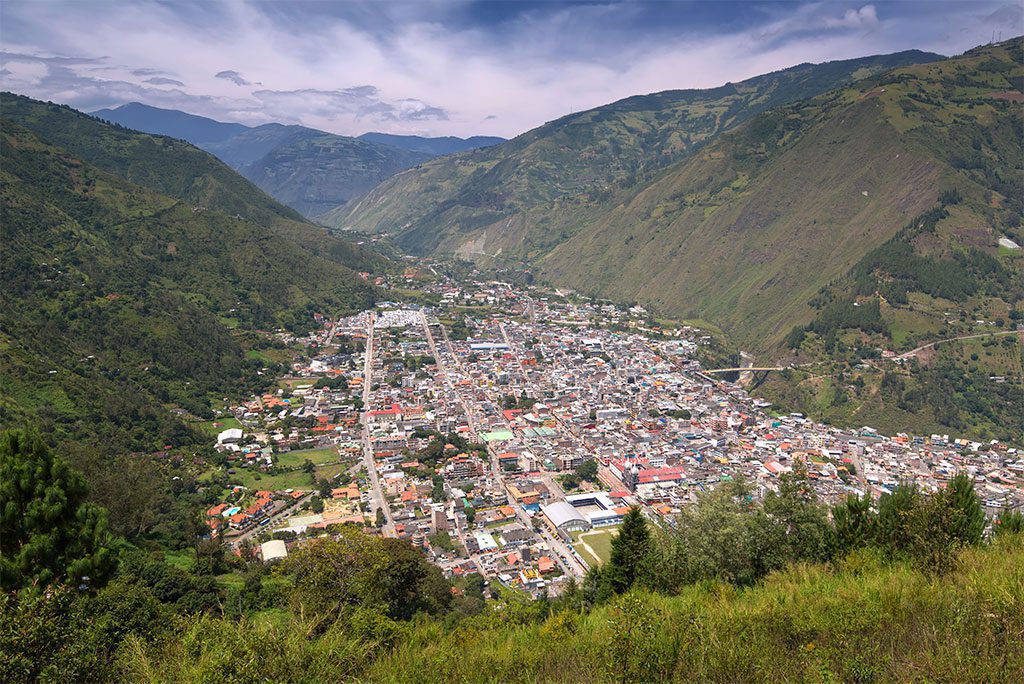
Banos de Agua Santa, a small town in the Tungurahua Province of Ecuador. Image source: sunsinger/Shutterstock.com
Baos, a tiny settlement, is located in the shadow of Tungurahua, an active volcano. Baos, one of Ecuador’s most visited cities, gets its name from the thermal waters that flow from the nearby volcano.
Baos is a popular starting place for excursions into the Amazon Jungle and is sometimes referred to as the “Gateway to the Amazon.” Tourists are also drawn to the river gorges because of the waterfalls that plunge hundreds of feet down the sides. The most striking is the roaring Pailon de Diablo waterfall, which plunges into a valley at the confluence of the Rio Verde and Rio Pastaza.
4. Cuenca
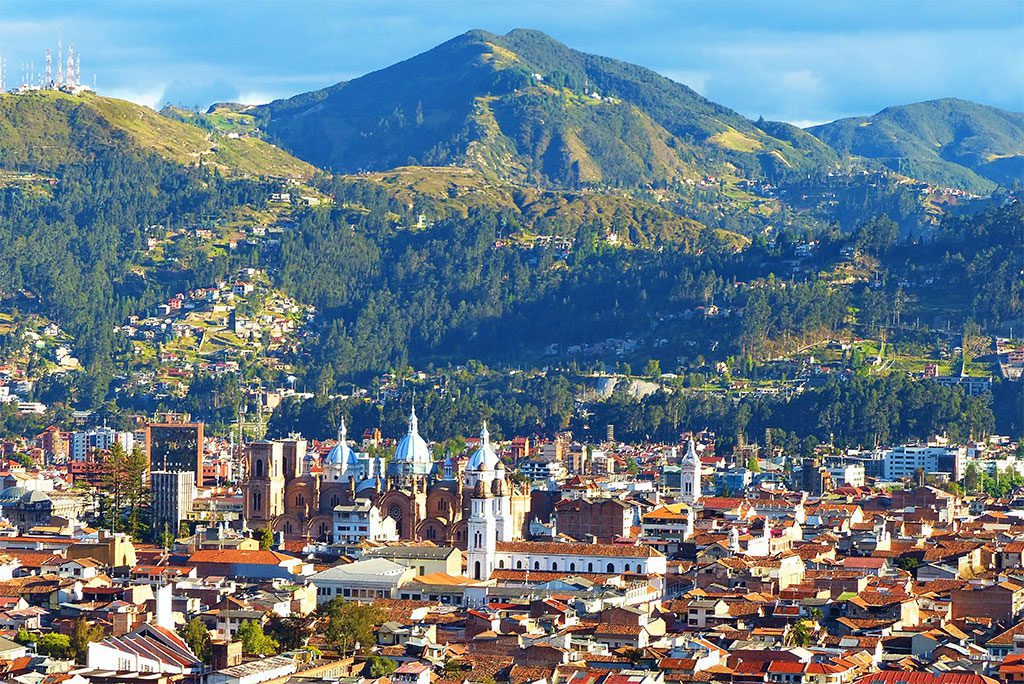
: the city of Cuenca, a UNESCO World Heritage site in Ecuador. Image source: ireneuke/Shutterstock.com
The provincial capital of Azuay, Cuenca, has several restored colonial structures. Cuenca, like Old Quito, is a prime example of a Renaissance-era planned city in the Americas.
However, without the pollution, noise, and people of the city, its small, cobblestone alleys, balconied buildings with internal courtyards, and white churches shine. Retired Americans flock to the city in droves because of its reputation for vibrant festivals in both January and November. The Canar plantation is home to the most extensive Inca remains in all of Ecuador.
3. Otavalo
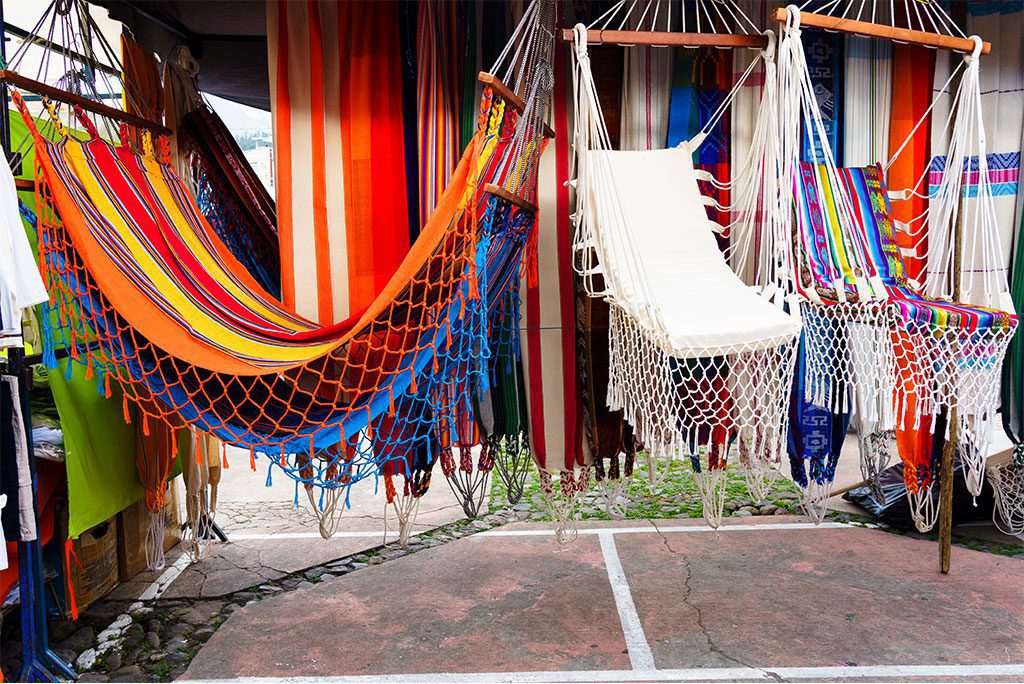
handmade handicrafts at the Indian market of Otavalo in Ecuador. Image source: Milosz Maslanka/Shutterstock.com
One of the most vibrant and significant weekly marketplaces in the Andes may be found in Otavalo. It’s the best location to find authentic, handcrafted things, such as leather goods, jewelry, and the city’s renowned, high-quality textiles.
This marketplace already existed before the time of the Incas. With snow-capped mountains as a background and locals dressed in their traditional garb, Ecuador is a photographer’s dream. Even if you can’t make it to the Plaza de los Ponchos on a Saturday, you may still be able to find some interesting souvenirs there.
2. Quito
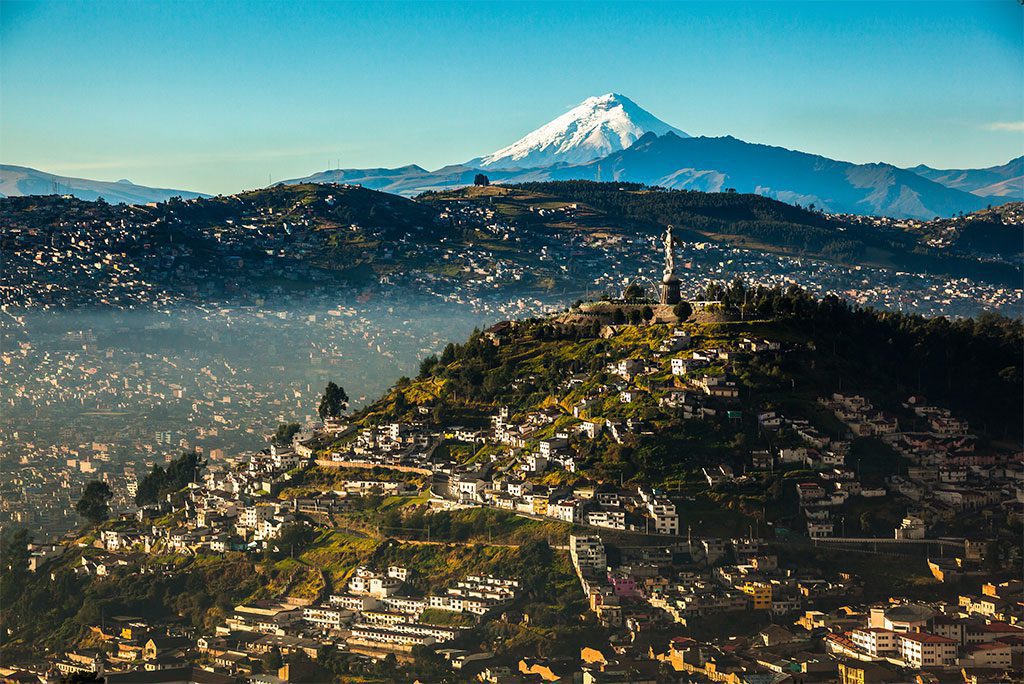
El Panecillo in the center of Quito, Ecuador. Image source: Ecuadorpostales/Shutterstock.com
Ecuador’s capital, Quito, is at a lofty 2,800 meters (9,350 feet) above sea level. The 2.2 million residents of this metropolis call an area of the Andes with active volcanoes home. One of South America’s biggest and best-preserved historic districts is located in Quito.
Established in 1534, it is home to no less than 20 colonial-era Catholic churches, and despite extensive renovation, the old town has managed to keep the same lively working class and indigenous spirit that has always distinguished it. The historic district is home to Carondolet Palace, Ecuador’s official presidential palace.
1. Galapagos Islands
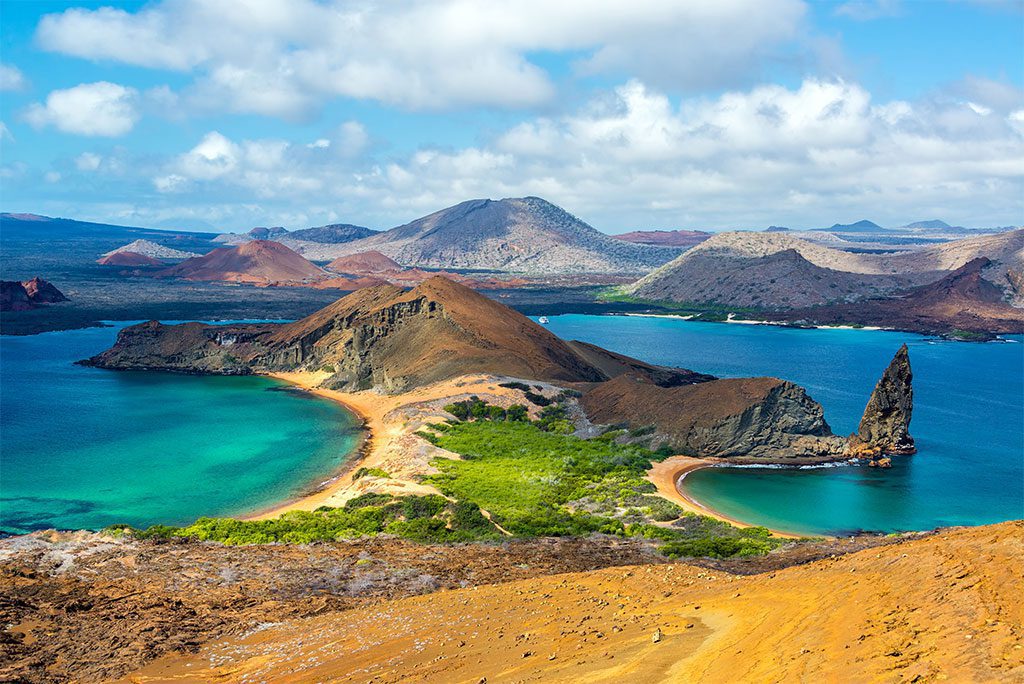
A stunning view of Bartolome Island in the Galapagos Islands, Ecuador. Image source: Jess Kraft/Shutterstock.com
Galapagos Islands, which inspired Charles Darwin’s theory of natural selection, are a distant yet picturesque archipelago of 19 islands on the equator west of Ecuador. These islands are home to rare and exotic species of flora and fauna that can’t be found anyplace else on Earth. Marine iguanas, giant tortoises, red-and blue-footed boobies, fur seals, lava lizards, frigatebirds, colorful Christmas iguanas, and the Galapagos Penguin are just a few of the rare and exotic animals that call the Galapagos home.
Although Darwin traveled to the Galapagos Islands in the early 1800s and Ecuador later claimed them, the islands were used as a prison colony in the early 1900s until being designated a national park in 1959. The Galapagos Islands are becoming a well-known vacation spot. Santa Cruz, with its giant tortoises, lava tubes, and Charles Darwin Research Center, ranks high on the list of popular destinations. Most of the hotels and travel companies are located in Santa Cruz as well.
The island of Fernandina is home to a wide range of animals, including flightless cormorants, marine iguanas, sea lions, dolphins, and whales. Kicker Rock, a prominent geological feature in San Cristobal, is a local landmark. The biggest island, Isabela, features hiking paths over its several volcanoes, while the sea lions of Plaza Sur may be seen in plenty there. The island of Baltra is where you’ll find the airport as well as a few gift stores; the islands of Wolf and Darwin are widely regarded as some of the top diving spots in the world.
Even though only a small number of the islands are inhabited, Puerto Ayora, Puerto Baquerizo Moreno, and Puerto Villamil are just a handful of the communities in the archipelago where you can find lodging, dining, and nightlife options.
The islands can only be visited by means of a cruise. A large number of tour companies operate out of Quito, Guayaquil, and Puerto Ayora. Tours may be booked for anything from one day to several weeks and can be taken on anything from a tiny boat to a luxurious cruise liner.


